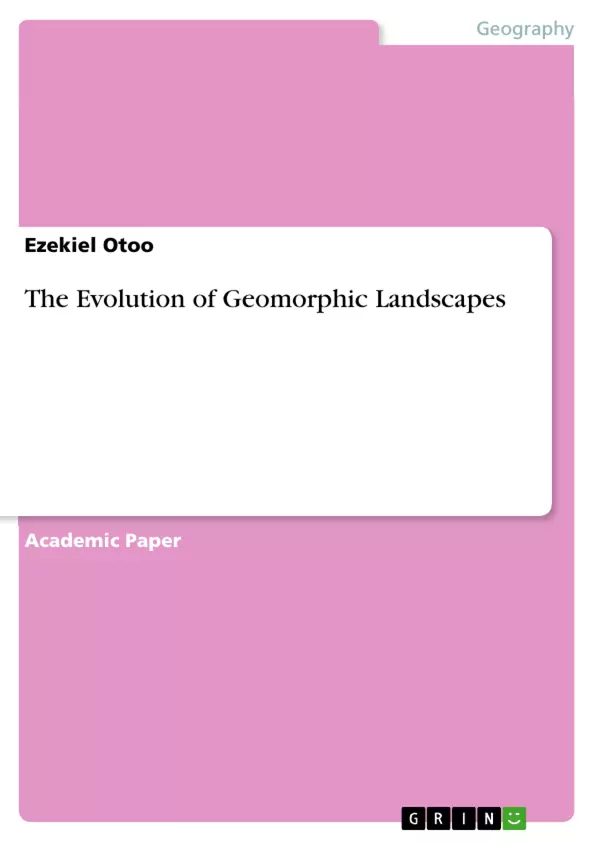The recent deteriorating nature of the Mile 11 hills has made the area a potential geo-hazard zone given the extent of human activities and the level of excavations on-going. The study sought to investigate the extent of landscape change and possible geological hazards between 1986 and 2016. It adopted the exploratory sequential design and the mixed research methodology. The study used spatial cartographic tools (GIS and Remote Sensing) to examine the extent of landscape change as well as interviewed 32 participants (residents and experts) for the qualitative analysis through the purposive sampling method.
Inhaltsverzeichnis (Table of Contents)
- Introduction
- Methodology
- Results and Discussion
- Dynamics of landscape change from 1986 to 2016
- Geomorphic Change Analysis between 1986 and 2016
- Elevation change projection for 2026
- Implication of elevation change and projection on geo-hazards
- Possible geological hazards triggered by landscape change
- Conclusion
Zielsetzung und Themenschwerpunkte (Objectives and Key Themes)
This study aims to investigate the evolution of the landscape and estimate potential geomorphic hazards in the Ga South Municipality, Ghana, between 1986 and 2016. It focuses on the impact of human activities on landscape change and the resulting geological hazards.
- The impact of urbanization, sand winning, and quarrying on landscape change
- The identification of potential geological hazards, including earthquakes, flooding, and mudflow
- The role of anthropogenic factors in landscape degradation
- The use of GIS and remote sensing techniques to analyze landscape change
- The importance of proper planning and coordination to mitigate geological hazards
Zusammenfassung der Kapitel (Chapter Summaries)
The introduction provides a background on landscape dynamics and highlights the increasing threat to landscapes worldwide, particularly in Africa. The study focuses on the Ga South Municipality in Ghana, where extensive human activities, including urbanization and mining, have led to significant landscape changes and potential geo-hazards.
The methodology chapter details the research design, including the use of both qualitative and quantitative methods. It describes the study area, sampling methods, data collection techniques, and data analysis procedures. The chapter also discusses the use of GIS and remote sensing to analyze landscape change.
The results and discussion section presents the findings of the study, including the extent of landscape change, the factors contributing to change, and the potential geological hazards associated with these changes. It analyzes the impact of various human activities on the landscape and the implications for the future.
Schlüsselwörter (Keywords)
The key terms and focus topics of this research include landscape evolution, geological hazards, geomorphic change, GIS, remote sensing, urbanization, sand winning, quarrying, and potential geo-hazards.
- Arbeit zitieren
- Ezekiel Otoo (Autor:in), 2020, The Evolution of Geomorphic Landscapes, München, GRIN Verlag, https://www.grin.com/document/1021430



